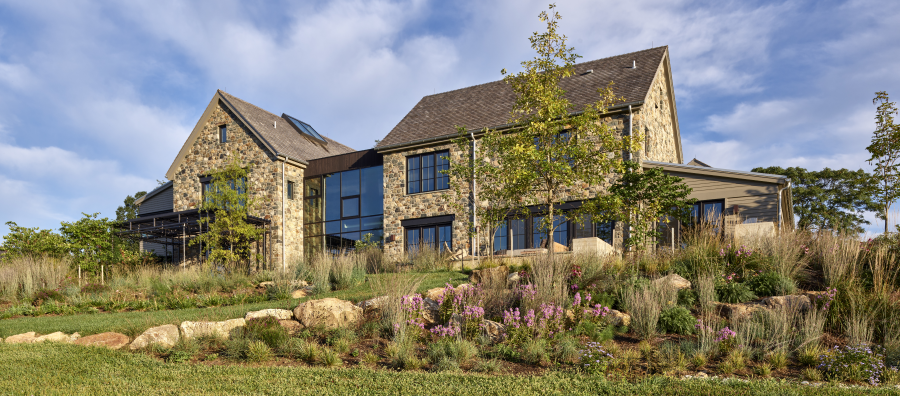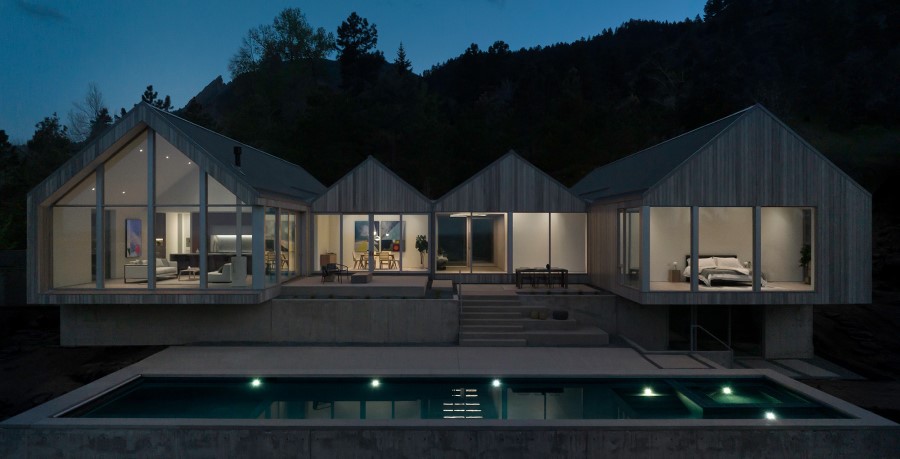Beautiful Biophilic Designs
Manufacturers can take advantage of the myriad benefits biophilic design presents

Photo by Jeffrey Totaro, courtesy MaMo Architects and Loewen Windows.
Biophilic design continues to gain attention from architects, builders and increasingly, homeowners. Understanding the definition of this concept, its benefits and its practical application in residential construction can benefit window and door manufacturers, as well as your customers.
Definition and design
Biophilia comes from a Latin word structure that means to love life and all that is alive. Psychologists adapted the term to describe people’s emotional connection to the Earth and our natural environments. Architectural and design professionals have adopted this concept in biophilic design strategies. This design focuses on creating positive, healthy, wellness-focused spaces for people to safely experience a connection with the outdoors, plants and animals through natural views, light, ventilation, materials, sounds, colors and textures.
Aesthetically, biophilic design elements often are associated with stone, clay, timber and earthen tones ranging from leafy greens to sky blues to floral hues. With architectural painted coatings, aluminum-framed window and door manufacturers not only can offer nearly any color, you also can use specialty finishes to replicate many natural materials in both look and texture. Finishes that mimic terra cotta, marble and masonry finishes offer a readily available, economical alternative to the actual material. Rare, exotic and everyday wood species can be simulated, while retaining all the performance advantages of metal.
Ideal benefits
Research shows our cognitive perception and physiological stress levels are reduced when we can see, hear and feel a connection with the natural world. Although nothing is better than immersing yourself in the outdoors, biophilic design seeks to blend our built and natural environments.
On the exterior, a home’s roofline may follow a mountainous backdrop, or its footprint may curve along a creek. Its construction may be intentionally integrated with the bedrock or within a grove of trees. As homeowners prefer larger and larger openings, window and door manufacturers can advise on optimal product placement to capture the best views balanced with aesthetics, performance, sustainability and proper installation.

Practical considerations
Exterior window and door performance typically addresses withstanding nature’s challenges, such as high winds and hurricanes, humidity and coastal salt spray, and intense solar exposure. On the interior, comfort is key for residents including quiet spaces, healthy air quality, reduced glare, privacy control and ideal indoor temperatures.
For biophilic designed homes, manufacturers have an opportunity to educate architects, builders and homeowners on energy-efficient windows and doors with environmentally responsible finishes. Single-source finishing partners will provide you and your customers a choice of paint coatings and anodize finishes plus options, such as separating and insulating aluminum framing to deliver thermally broken, energy-saving products.
Products manufactured with recycled aluminum further support sustainable practices. High-performance finishes protect the aluminum, require only minimal maintenance and reduce the need for repair and replacement. At the end of their lifespan, the aluminum can be locally recycled, demonstrating additional respect for our environment.
Biophilic design presents an opportunity for window and door manufacturers to enhance people’s connection with the environment, while strengthening connections with customers.



